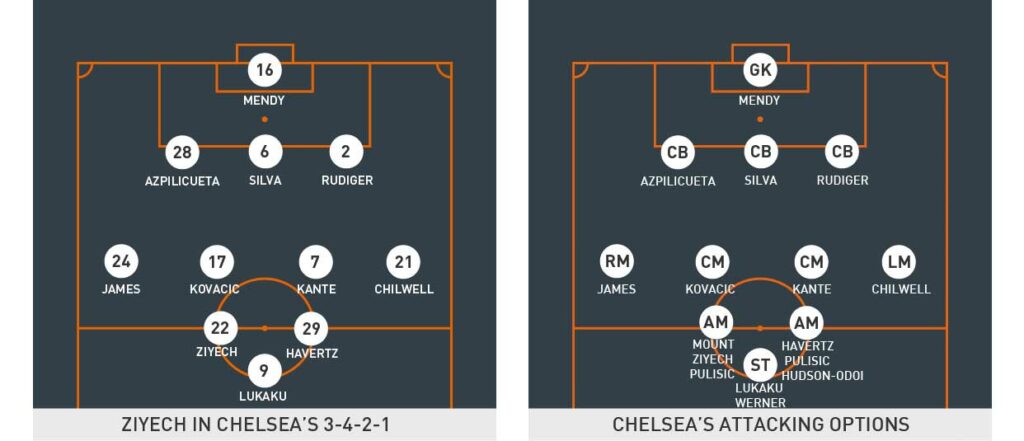
Hakim Ziyech
Chelsea, 2020–
Profile
Chelsea’s decision to sign Hakim Ziyech in the summer of 2020 might at first have appeared slightly curious with so many other attacking midfield options at the club. Callum Hudson-Odoi was keen to play more, Kai Havertz had arrived for £71m from Bayer Leverkusen, and Christian Pulisic and Mason Mount were two of their best players in 2019/20. However, after Ziyech recovered from an injury that delayed his debut, the Moroccan quickly proved why Frank Lampard was so keen to sign him.
Few other Premier League signings have looked so instantly at home as Ziyech has at Stamford Bridge, even though a few injuries have disrupted the early years of his Chelsea career. Manager Thomas Tuchel has been suitably impressed, but also believes there is more to come from the Moroccan. “We always rely on his work-rate, counter pressing, awareness,” said Tuchel. “It is a huge part of his performances, but he can still be more clinical and maybe grow more into the rhythm [of games]. I think his shoulder injury hurt him a lot. He is not as free as he should be.”
Tactical analysis
Ziyech is a right winger who likes to take up a wide starting position and then drive infield with the ball, on to his stronger foot and into positions where he poses a threat on goal, either with shots, through balls or crosses. He is most dangerous coming into central areas and looking to play killer balls to teammates making diagonal runs towards goal from the left. He is particularly skilled at playing deft balls over a defence, and if his teammates time their runs well, they often very suddenly find themselves with a one-on-one shooting opportunity (below). His movement off the flank means the right-back can overlap.
The dip with which Ziyech plays those balls into the area is one of his greatest skills, not only because he so often creates clear-cut chances for his teammate, but also because he teases the opposition goalkeeper with a ball that looks like it might float through to them but drops short into the zone in front of goal. Ziyech can manipulate the ball impressively, and that leads to him creating plenty of chances for his team.
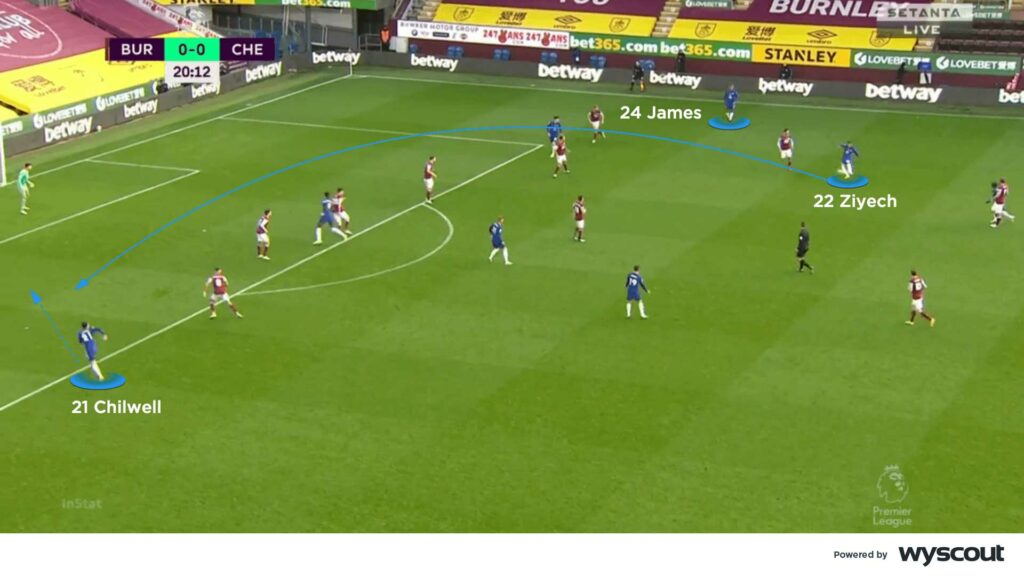
He also regularly cuts inside from a wide starting position and targets the goal directly, meaning he provides a goalscoring threat similar to that posed by one of his predecessors at Chelsea, Arjen Robben. His slight frame, dribbling skills and wicked left foot are reminiscent of Manchester City’s Riyad Mahrez, though he is far weaker on his right side than Mahrez, who can shoot with power with both feet – that may be an area of his game that Ziyech should work on improving. He has incredible balance, speed and acceleration, is able to shake off the attention of an opponent with ease and create himself shooting opportunities, rather than going down the line to cross.
The threat he poses when he moves infield means he draws defenders towards him, creating gaps for others further forwards. That also works the other way around; teammates know that when Ziyech moves towards goal they should make runs that take defenders away and create space for him to shoot. When he does get into a position to shoot from range, he usually looks to bend his foot around the ball and aim for the far corner.
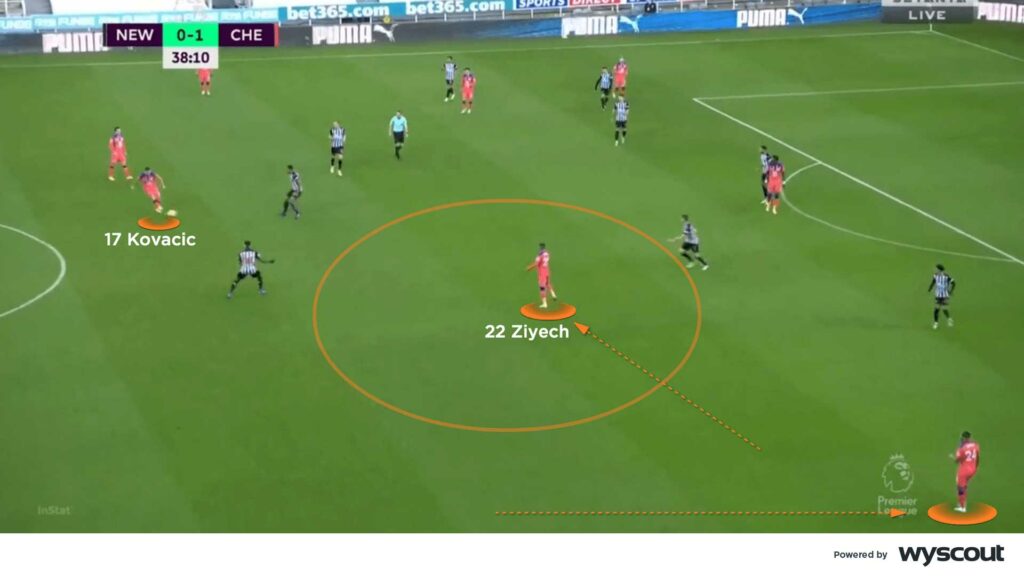
Role at Chelsea
Before Ziyech’s arrival at Chelsea, Lampard used César Azpilicueta as a withdrawn right-back with a right-footed right-sided forward ahead of him in Willian. However, Ziyech moving to Stamford Bridge was perfectly timed with the emergence of the more attack-minded Reece James. Ziyech’s preference for moving in field complemented James’ overlapping runs brilliantly, and the two built up a positive relationship almost immediately.
James makes tireless runs up and down the right, into space that Ziyech creates with his movement into central positions, and while Azpilicueta attempted crosses from deeper positions, James likes to get closer to the byline and even into the penalty area. Ziyech has the freedom to move wherever he wants across the pitch, and though the Moroccan is probably most comfortable in the half-spaces, he also sometimes moves into a position you might expect of a number 10 (above) – a position he played occasionally for Ajax.
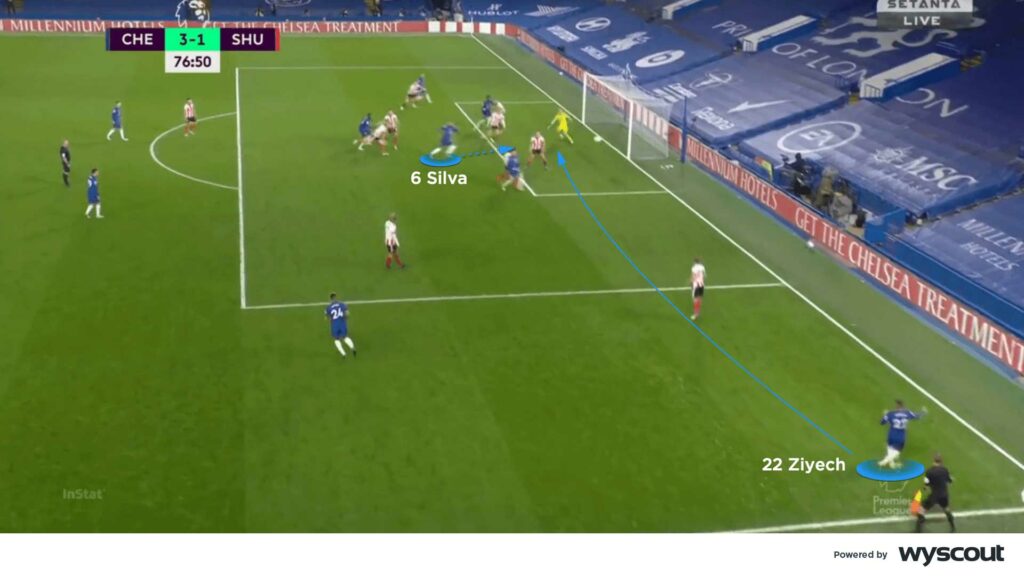
Ziyech and James’ partnership was a positive one in Lampard’s 4-3-3, and although he has struggled for game time a little more under Tuchel, the 3-4-2-1 formation that the German manager appears to suit both players more. Ziyech slots in naturally as the right-sided number 10 behind a lone centre-forward and James enjoys great freedom as a wing-back.
With James providing the team’s width on the right, Ziyech can spend more time trying to get on the ball in between the lines – where he is at his most threatening. When he gets into those positions, his first thought is slipping a through ball forward for Romelu Lukaku or Timo Werner to get in on goal. As soon as either striker sees Ziyech get on the ball in that zone, they set off on a run across the back of an opposition centre-back to try and get in behind.
There are occasions when Ziyech stays wide, and when he does, his crossing ability is very useful. He has also proved a useful addition for Chelsea at set-pieces, when his vicious, swinging deliveries are highly effective (above), and Tuchel’s team are up there with the most effective teams in the Premier League when it comes to offensive set-pieces. Their defenders score a significant portion of their goals.
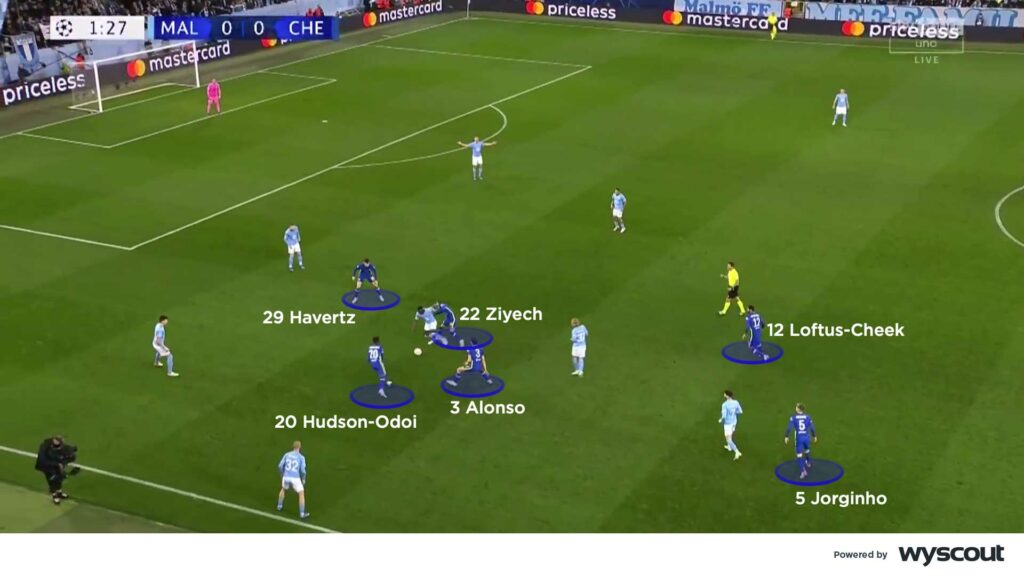
Out of possession, Ziyech works hard to make sure Tuchel’s game plan is put into place. Chelsea press with real intensity and purpose when the ball is out wide, with the two number 10s and the striker moving to near the touchline to help the wing-back on that side crowd out the opposition (above). In these situations, Chelsea concede the opposite side of the pitch in the hope of winning the ball back close to goal. If the opposition do get out and play back to their goalkeeper to switch play, it is up to the number 10 from that side – Ziyech in the above photo – to sprint across the pitch and prevent the opposition from progressing too far up the pitch. It is a demanding role to which he has adapted well.
Ziyech also shows a good understanding of his role in cutting off passing lanes from the opposition's defence into midfield once Chelsea are set up to defend in their 5-2-3 block. One area in which he has shown an improvement at Chelsea is at the point of defensive transitions, when he could sometimes be slow to react and make a recovery run, but Tuchel expects his attackers to counter-press when they have the opportunity to, and Ziyech shows good commitment to the cause.
In Ziyech, Chelsea have a gem on their hands who has taken to life in England well, but is still yet to show his true potential under Tuchel. Given the effect Tuchel has had on so many of Chelsea's players, there is good reason to expect Ziyech to get even better.
